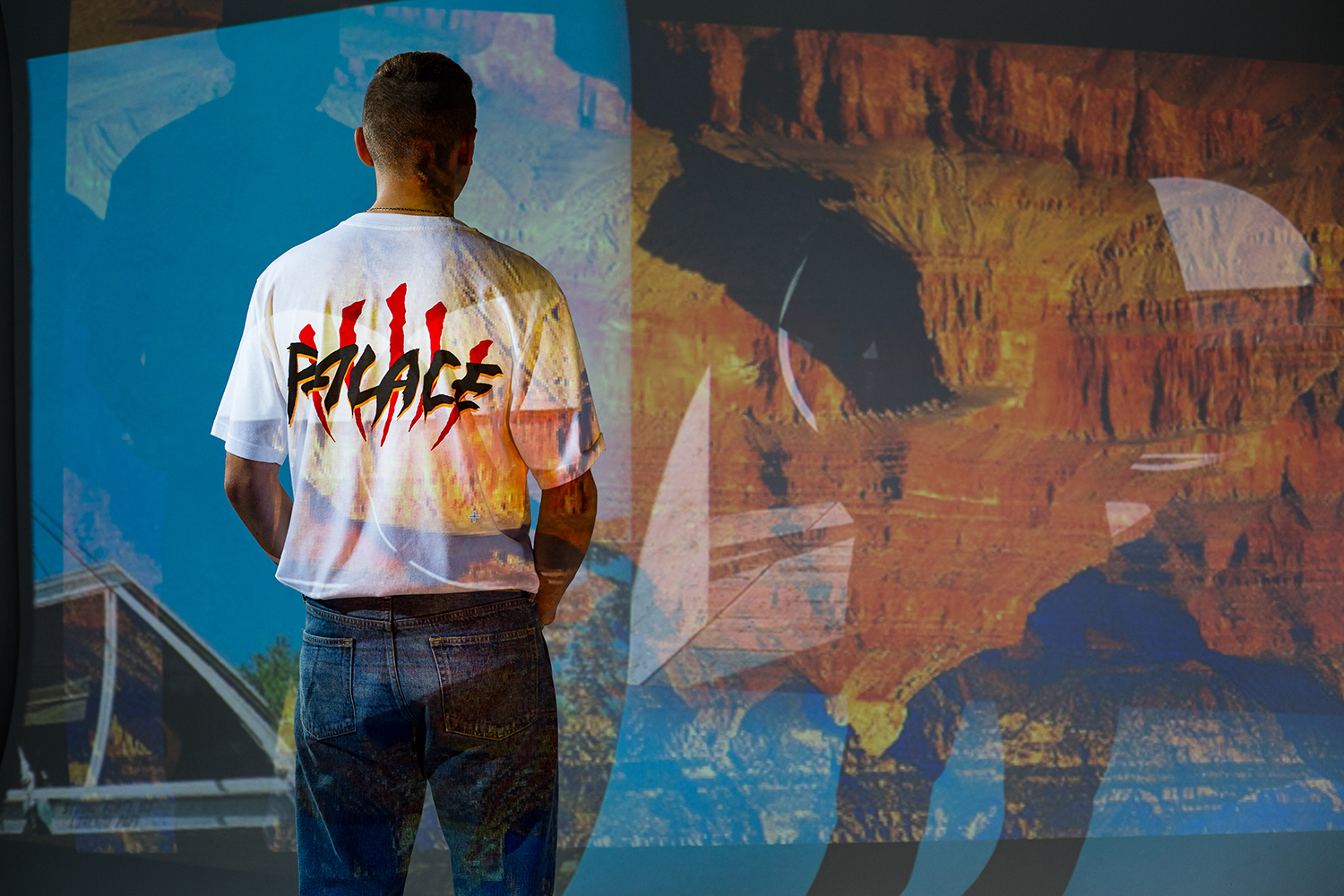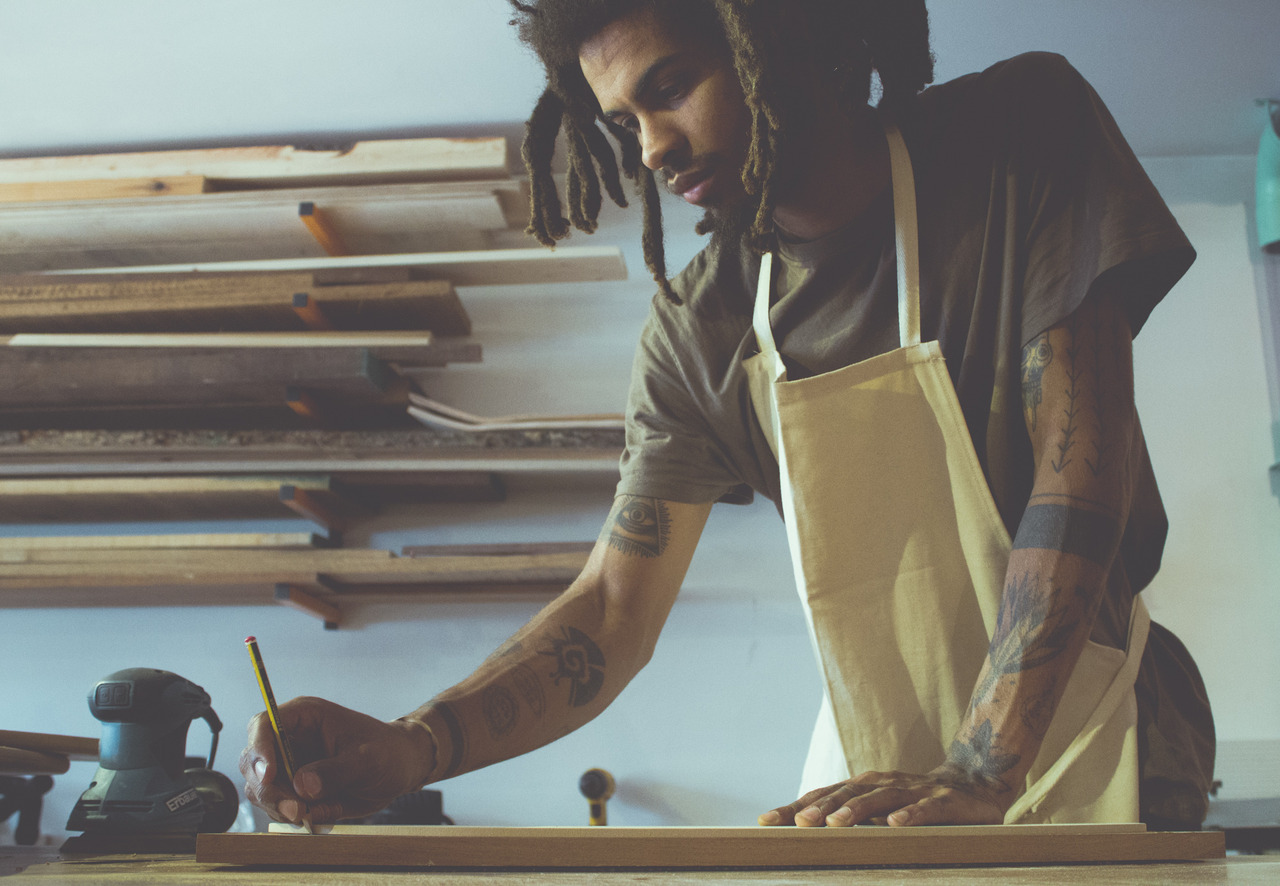The Designers Leading The Evolution Of London’s Streetwear
By Something CuratedStreetwear has a complicated past and a contended present: both aestheticized and valorized today as the icon of subcultural resistance, youthful rebellion, and transgression. But in a fashion world jaded by the predictability and clichés of decadence, streetwear has been summoned from its marriage to subcultures and social revolution movements in the 60s, 70s and 80s and revived, this time right on the catwalk.
What is to be made of streetwear’s new lease on life? Here, Something Curated looks to some of the leading voices of today’s fashion industry to help unpack the dense web of the streetwear aesthetic and its history as a London-centric movement.

What are the stakes, the vices and the virtues of re-appropriating this aesthetic in the 21st century fashion world? Looking at the streetwear movement from the eyes of a post-internet culture means acknowledging the differences between the original and contemporary street styles.
From Kanye to Vetements, basic wardrobe stables such as the hoodie have been elevated to runway status while maintaining their grungier identity. To find out whether re-appropriation or rebellion or both are at stake, Something Curated surveys the recent history and present of London-based streetwear taking a close look at the creative forces at the heart of the movement.
Skatewear: Palace (Lev Tanju) | Satta Skates (Joe Lauder) | Supreme London (James Jebbia)
Palace

Palace Skateboards was founded in 2009 by Lev Tanju, who was part of a London-based skate crew known as the Palace Wayward Boys Choir. Since its debut, Palace has gone on to do collaborations with sportswear brands like Adidas and Reebok as well as more off-the-cuff London designers like militarized ArkAir (1985) and streetwear designers such as Thames. Throughout these collabs, the big boys still leave plenty of room for Palace’s own aesthetic to shine through, meanwhile the brand has grown up to become one of if not the premiere London streetwear labels. Often referred to as the “Supreme of London” Palace’s success is no doubt borne from the recent merging of streetwear and skateboarding aesthetics. In 2015, Palace opened its London flagship store, permanently cementing its place on London’s fashion walk.


Satta Skates

Founded in 2008 by Brixton resident Joe Lauder, Satta is one of London’s leading skatewear and lifestyle brands that focuses on small-scale production and ethical sourcing. It offers hand-crafted skateboards produced in the 70s surf-skate fusion style, imprinted with screen-printed designs dreamed up by Lauder himself (with the occasional contribution from London illustrator Stevie Gee). Taking influence from an alternative education – from living with a shaman in the Amazon to landscaping in Melbourne, Australia – Lauder returned to London to establish Studio Satta, through which he vends clothing, accessories, bespoke furniture and commissioned garden designs as well as incense collections. Lauder describes the retro surfer aesthetic of his boards as “made for surfing the sidewalks of our cities, like rideable works of art.”

Supreme London

Supreme was founded in 1994 by expat Brit James Jebbia, who was born in the USA but lived in the UK from ages one to nineteen. Supreme is often seen as the beacon of the return to streetwear, effectively straddling the dividing point between contemporary labels and streetwear of a yesterday’s past. Prior to running Supreme, Jebbia was working with CA-based Stüssy, whose 80s heritage dated even further back to the source.
With the founding of the London flagship store, Supreme put London definitively on the map as one of the world’s leading outputs for new streetwear brands. Supreme is nothing short of a mecca for the new age of London’s streetwear, with its numerous collaborations with rooted UK brands like Stone Island and younger labels.

Streetwear Remade: Nasir Mazhar | A Number of Names (Craig Ford)
Nasir Mazhar

Mazhar’s aesthetic – “just don’t call it streetwear,” the designer says – strays from an easy categorization, profoundly influenced by UK music genres like garage and grime. Resistant to being pigeon-holed into what he sees as a fluff term that reeks of marginalization, Mazhar’s collections operate like a one-man army with no easy comparison: combining futuristic accessories like muzzle masks and goggles with acid neon coloured clothes to dominate a futuristic “rough-and-tumble yet ready for the club” landscape and lifestyle. From Turkish-Cypriot descent, London-born Mazhar he mashes up both worlds and often injects sportswear motifs into his collections (another fusion between sportswear/skatewear and streetwear à la Adidas and Supreme), often in the form of heavily branded trainers, nylon and mesh fabrics, and the athletic-inspired caps that were amongst Nasir’s first creations while the designer worked at Brick Lane hair salon. Mazhar is such a generally-acknowledged staple to contemporary London culture (not just the fashion industry) that he was commissioned even created headwears for the 2012 Summer Olympics opening ceremony in London. Read more about Mazhar’s London-studio here.
A number of names*

A number of names* was founded by Craig Ford in 2008. Ford, considered by many to be the leading expert of streetwear in London, is responsible for introducing leading international names like the Japanese cult skatewear brand A Bathing Ape and New York based BBC/Ice Cream, C.E Italian Gourmet, FPAR, and Bedwin and the Heartbreakers into London’s streetwear scene.
“Streetwear meant something exciting outside of the grey drab reality of the ’80s. It was foreign…Without being dictated to you by TV or you know, the media, so it felt pretty free and exciting. [Now,] it’s a way of ensuring a brand has a point of difference, for all those switched on kids that understand marketing and don’t want to be marketed to, those kids appreciate brands that don’t market in that mass way.”

Streetwear Recycled: Wavey Garms (Andreas Branco) | Too Hot Limited (Ollie Evans)
Whilst the push for new streetwear collection has taken the fashion industry by storm , some online-only retailers like Peckham-based Wavey Garms (founded 2013) and Walthamstow-based Too Hot Limited (also founded 2013) have flourished by identifying and honing in on street wear’s eternal cool. Read more about the logic behind streetwear’s enduring relevance here.
Wavey Garms

Wavey Garms found its humble beginnings in 2013 as a vintage clothing trading outpost for iconic streetwear pieces, managed through a Facebook page. Set up by Andres Branco, Wavey Garms has maintained their grassroots yet Ebay-esque vibe despite surging in popularity these past two years. Wavey Garms are also sold through Wavey’s newly opened outpost in Peckham Rye; however the majority of trading is still done online. The success of Wavey Garms is also a key indicator of the significance that internet cultures has played in the revival of the streetwear epidemic over the past few years.
Too Hot Limited
Too Hot Ltd, founded by director Ollie Evans, is much the same story as Wavey Garms – minus the real world outpost. Ollie comes from an intensive background in filmmaking, having recently made a film called ‘Jungle Fever’ for Dazed that has since shown at both the ICA and Tate Britain. Too Hot Limited was recently featured in LAW Magazine’s Issue 5. THL specialises in iconic cultural artefacts, dealing in Stone Island (of which Ollie’s own collection is extensive, to say the least) Burberry, Polo, Berghaus, YSL, Aquascutum and Prada among others.

“My customers are such a wide range of people from all walks of life and around the globe. I find it really inspiring that they are buying into a very UK street aesthetic. Taking pride in representing that you’re from the UK is a good thing, being a multicultural nation is a good thing and being proud of our subcultural heritage is good thing.”

21st Century Streetwear: Rebellion, Re-appropriation, or both?
“But the war cry of 21st century streetwear is its own cool. It fights its own battle [against the fashion industry] with aesthetics of irony, not with its fists.”
21st century streetwear is as subversive as the orders of subcultures from the 60s through 90s from which it draws its influence and inspiration. But instead of staging a social revolution like its predecessors, it instead strikes closer to home: the fashion industry. It has, since the early aughts, bucked the comfortable routine of the catwalk: both inverting and rejecting gender binaries, mixing up seasonal order, even changing the modes of presentation from something placid and material-obsessed to experience-driven narratives that feel more like art performances than real-time advertising.

The war cry of 21st century streetwear is its own cool. It fights its own battle with the aesthetics of irony, not with its fists. Taking a more defensive approach than its riotous origins, it has instead climbed on stage through the backdoor. Other than targeting the inner-workings of the fashion industry, it has little political charge: and rightly so.